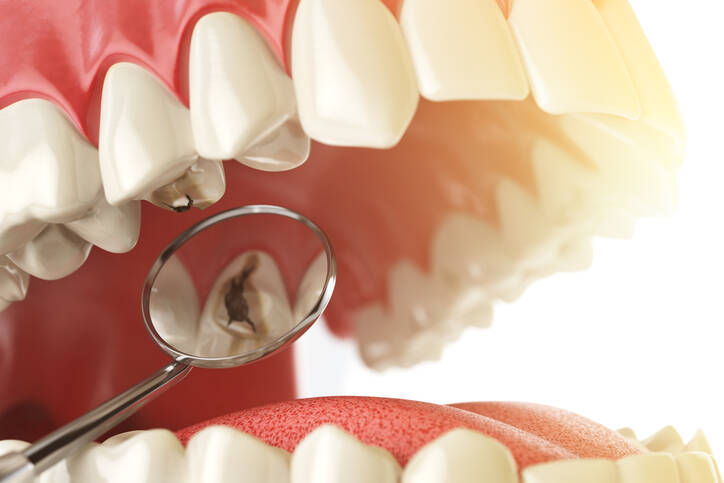- Laudenbach, JM; Simon, Z (November 2014). "Common Dental and Periodontal Diseases: Evaluation and Management". The Medical Clinics of North America. 98 (6): 1239–1260. doi:10.1016/j.mcna.2014.08.002. PMID 25443675.
- "Oral health Fact sheet N°318". who.int. April 2012. Archived from the original on 8 December 2014. Retrieved 10 December 2014.
- Taber's cyclopedic medical dictionary (Ed. 22, illustrated in full color ed.). Philadelphia: F.A. Davis Co. 2013. p. 401. ISBN 9780803639096. Archived from the original on 2015-07-13.
- SECTION ON ORAL, HEALTH; SECTION ON ORAL, HEALTH (December 2014). "Maintaining and improving the oral health of young children". Pediatrics. 134 (6): 1224–9. doi:10.1542/peds.2014-2984. PMID 25422016. S2CID 32580232.
- de Oliveira, KMH; Nemezio, MA; Romualdo, PC; da Silva, RAB; de Paula E Silva, FWG; Küchler, EC (2017). "Dental Flossing and Proximal Caries in the Primary Dentition: A Systematic Review". Oral Health & Preventive Dentistry. 15 (5): 427–434. doi:10.3290/j.ohpd.a38780. PMID 28785751.
- Silk, H (March 2014). "Diseases of the mouth". Primary Care: Clinics in Office Practice. 41 (1): 75–90. doi:10.1016/j.pop.2013.10.011. PMID 24439882. S2CID 9127595.
- "Oral health". www.who.int. Retrieved 2019-09-14
- Schwendicke, F; Dörfer, CE; Schlattmann, P; Page, LF; Thomson, WM; Paris, S (January 2015). "Socioeconomic Inequality and Caries: A Systematic Review and Meta-Analysis". Journal of Dental Research. 94 (1): 10–18. doi:10.1177/0022034514557546. PMID 25394849. S2CID 24227334.
- Otsu, K; Kumakami-Sakano, M; Fujiwara, N; Kikuchi, K; Keller, L; Lesot, H; Harada, H (2014). "Stem cell sources for tooth regeneration: current status and future prospects". Frontiers in Physiology. 5: 36. doi:10.3389/fphys.2014.00036. PMC 3912331. PMID 24550845.
- Vos, T (Dec 15, 2012). "Years lived with disability (YLDs) for 1160 sequelae of 289 diseases and injuries 1990–2010: a systematic analysis for the Global Burden of Disease Study 2010". The Lancet. 380 (9859): 2163–96. doi:10.1016/S0140-6736(12)61729-2. PMC 6350784. PMID 23245607.
- Bagramian, RA; Garcia-Godoy, F; Volpe, AR (February 2009). "The global increase in dental caries. A pending public health crisis". American Journal of Dentistry. 22 (1): 3–8. PMID 19281105.
- Health Promotion Board: Dental Caries Archived 2010-09-01 at the Wayback Machine, affiliated with the Singapore government. Page accessed August 14, 2006.
- Richie S. King (November 28, 2011). "A Closer Look at Teeth May Mean More Fillings". The New York Times. Archived from the original on November 29, 2011. Retrieved November 30, 2011.
An incipient carious lesion is the initial stage of structural damage to the enamel, usually caused by a bacterial infection that produces tooth-dissolving acid.
- Johnson, Clarke. "Biology of the Human Dentition
Tooth Decay: Causes and Manifestations

Photo source: Getty images
Most common symptoms
Show more symptoms ᐯ
Treatment: How to treat tooth decay? You can't do it at home, you need a specialist!
Show moreTooth Decay is treated by
Other names
Dental cavities, dental caries, cavities, caries











